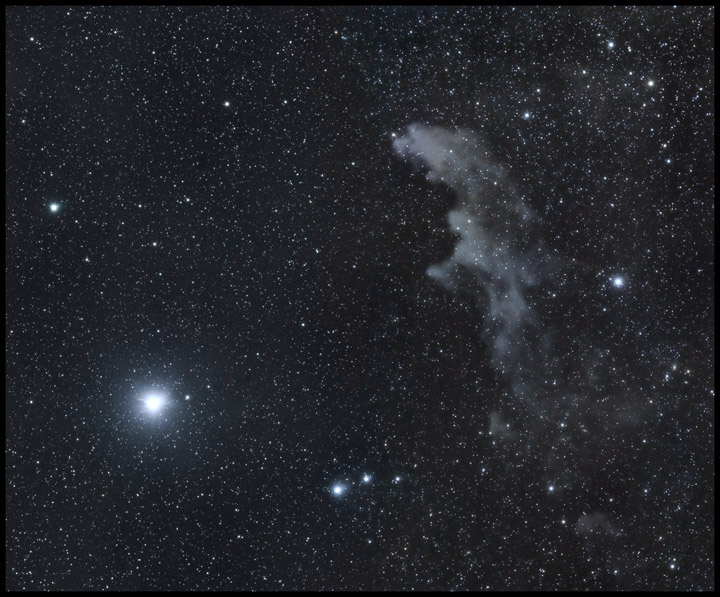Alnitak, Alnilam, and Mintaka
I really intended to do some two-panel mosaics last night in the cul de sac. The revisions to the G11 outfit worked out well; it all went together faster and more easily than ever.
I got decent data under a cold, clear sky, but something went off in the calibration steps overnight or this morning. I lost most of Sunday trying to get the darks and flats (which I finally remembered to take while I packed up the kit) to work better than having none at all. Late in the day, after a couple of futile three-hour data reduction runs, I got an 8-frame subset to behave and tried out the revised methodology on the sixty subframes dedicated to the belt of Orion. Details to follow. It seems to be working...

The Belt of Orion
60 x 90s (1h 30m)
AT65EDQ,
G11, unguided
Canon 6D @ ISO 3200
Click for a better view.
Turns out that two E-W frames just contain the field above and M42, but the composition is too tight to be pleasing. I'll either drop back to the 180mm or use three frames by and by. Now that the preprocessing is working, I'll take another cut at the region around Rigel for which I did get two side by side N-S frames. Here they are without calibration. I have no idea why the flat field is frigging the calibration for these frames but not the Belt photo above. Nevertheless, I managed to get by with darks alone and lots of background extraction in Pixinsight:

Rigel and IC 2118
same as above except 36x90s
two panel mosaic, left and right
Click to enlarge, such as it is.
Except where noted, deep-sky photos are made with an SBIG ST2000XM CCD behind a 10-inch Astro-Tech Ritchey-Chretien carried on an Astro-Physics Mach1GTO. The CCD is equipped with Baader wide- and narrow-band filters. The internal guide chip of the CCD most often keeps the OTA pointed in the right direction (I'll let you know when an OAG or guidescope takes its place). Camera control and guiding are handled by Maxim DL 5.12. The stock focuser on the AT10RC has been augmented with Robofocus 3.0.9 using adapters turned on the lathe downstairs. A Canon 6D and a modded 50D find themselves mounted on an Orion 10" F4 Newtonian or carrying widefield glass on an iOptron Skytracker. Beginning in May 2013, PixInsight has taken over more and more of the heavy lifting -- alignment, stacking, gradient removal, noise-reduction, transfer function modification, color calibration, and deconvolution. Photoshop CS4 et seq and the Focus Magic plugin get their licks in, too.
:: top ::